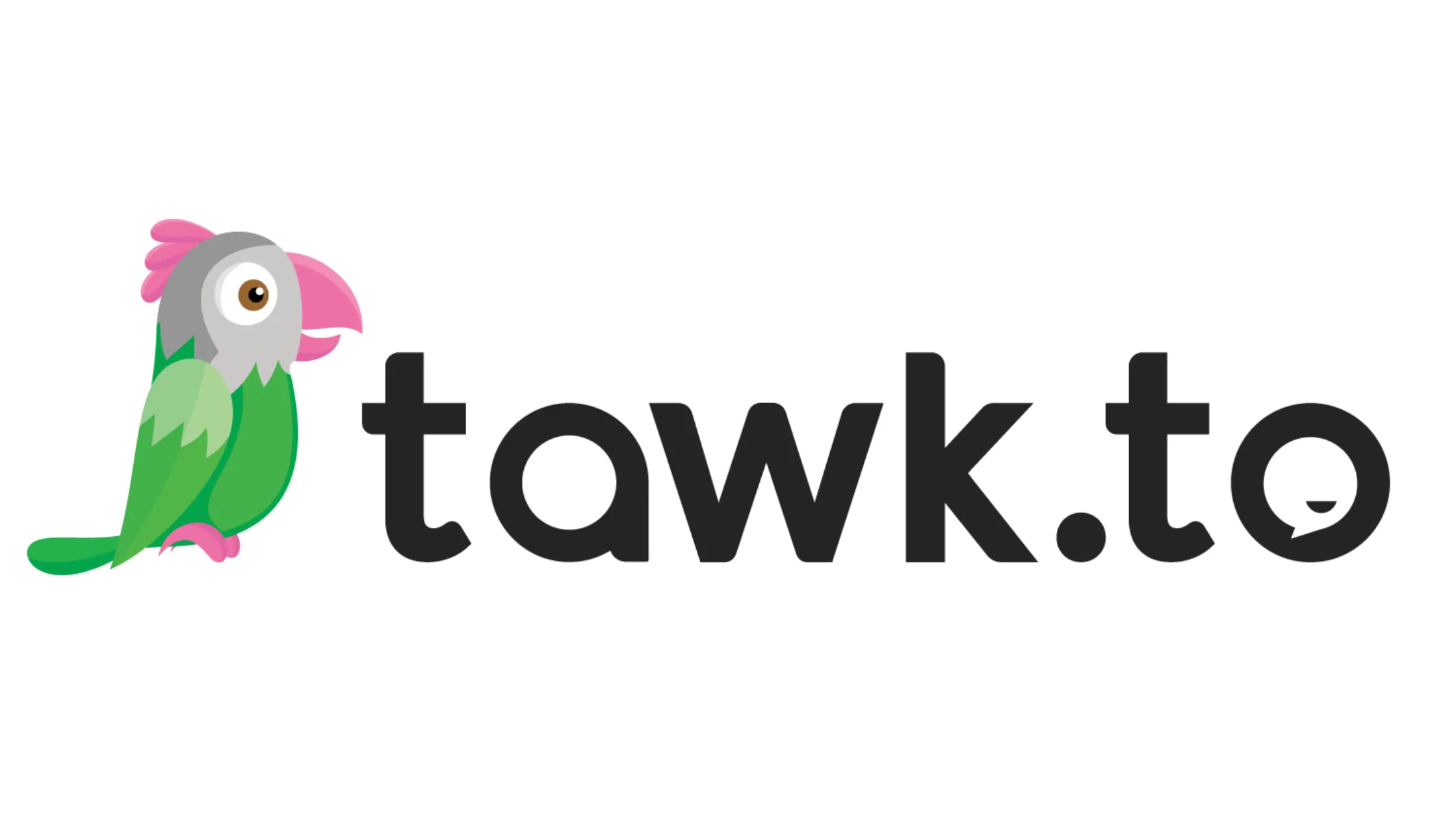
What is Go-to-Market (GTM)?
Go-To-Market (GTM) strategies guide startups in launching their products successfully. Learn how to build a GTM plan, avoid common mistakes, and scale.
So, you’ve built a product or you’re almost there—congratulations! Now comes the tricky part: getting your product in front of your audience. This is where a Go-To-Market (GTM) strategy comes into play. You might’ve heard the term thrown around by investors or mentors, but what does it really mean? More importantly, how do you, as a startup founder, use it effectively to scale your business?
In this article, I’ll break down everything you need to know about GTM strategies—what they are, why they matter, and how you can craft one that aligns with your startup’s needs. Let's dive in.
What Is a Go-To-Market Strategy?
Defining GTM for Beginners
A Go-To-Market (GTM) strategy is your action plan to launch your product and get it in the hands of customers. It’s essentially the roadmap that outlines how you’ll sell, market, and distribute your product to the right audience at the right time. Think of it like a tactical game plan to achieve success in the marketplace.
Here’s what a strong GTM strategy addresses:
- Target Market: Who exactly are you selling to?
- Product Positioning: What problem does your product solve, and why should people care?
- Pricing Strategy: How much will you charge, and what pricing model makes sense?
- Sales Channels: Where and how will you sell your product—online, retail, direct-to-consumer?
- Marketing Tactics: How will you raise awareness and generate interest?
Why Does GTM Matter?
Without a clear GTM strategy, even the best product could flop. Many founders focus heavily on building the product but fail to understand how to present it to the market. Without a well-thought-out GTM plan, you risk wasting valuable time and resources. A solid GTM strategy ensures that:
- You reach the right audience: Not all consumers are your customers.
- You differentiate from competitors: Standing out in the market can be tough without a clear message.
- You accelerate growth: With the right strategy, you can scale faster and smarter.
At Horizon Labs, we work with founders at all stages—whether they're still prototyping or ready to scale. Crafting a GTM strategy is an essential part of the process, and we’ve seen firsthand how the right plan can transform a product’s launch.
Crafting Your Go-To-Market Strategy
Step 1 - Identify Your Target Audience
One of the first steps in developing a GTM strategy is pinpointing who you’re selling to. You can’t sell to everyone, so who are the exact people that will benefit the most from your product? This is where user personas come in handy.
Create your ideal customer profiles:
- What pain points does your product solve for them?
- What are their demographics (age, location, income)?
- What motivates their buying decisions?
Once you’ve defined this, you’ll have a clearer understanding of how to position your product and tailor your marketing.
Step 2 - Position Your Product for Success
Now that you know who you’re targeting, you need to figure out how to position your product. Your positioning is all about how your product is perceived in the market. The key questions to ask yourself are:
- What unique value does my product offer?
- How is my product different from competitors?
- Why should customers choose my product over another solution?
At Horizon Labs, we’ve helped startups across various industries refine their product positioning to ensure they stand out in a crowded market. Whether it’s healthtech, marketplaces, or SaaS, your GTM strategy must be aligned with how your audience perceives your value.
Step 3 - Determine Pricing and Sales Channels
Next, consider how to price your product and where to sell it. Are you going for a subscription model or a one-time purchase? Pricing can be a sensitive issue for founders because you want to maximize revenue without scaring customers away.
Some common pricing models:
- Freemium: Offer a basic version for free and charge for premium features.
- Tiered Pricing: Different pricing tiers for different customer needs.
- Usage-Based Pricing: Charge based on the amount a customer uses (common in SaaS products).
Once you’ve nailed down pricing, choose the best sales channels. Will you sell directly to consumers through your website, partner with retailers, or use third-party platforms?
Step 4 - Develop a Marketing Plan
Marketing is the engine that drives awareness and sales. Your GTM strategy needs a solid marketing plan to bring your product to the masses. You’ll want to focus on different marketing channels based on your target audience and the nature of your product.
Here are some popular channels to consider:
- Social Media Marketing: Great for e-commerce and B2C startups.
- Content Marketing: Useful for building credibility and organic traffic.
- Paid Ads (PPC): Ideal for driving immediate traffic but can be costly if not managed well.
- Email Marketing: Powerful for engaging with warm leads and current customers.
It’s crucial to test different marketing strategies early on. At Horizon Labs, we guide startups through this phase, helping them experiment with various marketing tactics to see what resonates best with their audience.
Common Mistakes to Avoid in Your GTM Strategy
Trying to Target Everyone
One of the biggest mistakes I see founders make is casting too wide of a net. Not everyone will be your customer, and that’s okay. Focus on a niche, especially at the beginning, and scale from there.
Underestimating Time to Market
Many founders are too eager to launch, thinking they need to get their product out ASAP. But without proper preparation—researching your audience, positioning your product, and building anticipation—you could stumble right out of the gate.
Ignoring Feedback
Your initial GTM strategy isn’t set in stone. It’s a living, breathing plan that needs adjustment based on customer feedback. Don’t be afraid to pivot your strategy based on real-world feedback.
Measuring the Success of Your GTM Strategy
Key Metrics to Track
Once you’ve rolled out your GTM strategy, how do you know if it’s working? Measuring the right metrics is essential for understanding whether your approach is effective or needs adjustments. Here are a few key performance indicators (KPIs) to keep an eye on:
- Customer Acquisition Cost (CAC): This measures how much you’re spending to acquire a new customer. A high CAC might indicate that your marketing efforts need fine-tuning, or that your product isn't resonating with your target audience.
- Lifetime Value (LTV): This metric tells you how much revenue you can expect from a customer over their lifetime. Ideally, your LTV should be much higher than your CAC to ensure profitability.
- Churn Rate: Churn refers to the number of customers who stop using your product or service over a given period. A high churn rate signals that something is off—either your product isn’t meeting customer expectations, or your support and retention strategies need work.
- Conversion Rate: How many people are taking the actions you want, such as signing up for a free trial, making a purchase, or booking a demo? Tracking conversion rates helps you gauge the effectiveness of your sales funnel.
- Revenue Growth: Ultimately, one of the best ways to measure GTM success is to look at your revenue. Are you steadily growing month over month, or has your growth plateaued?
By regularly tracking these metrics, you can gather actionable insights into what’s working and what’s not in your GTM strategy. At Horizon Labs, we integrate these metrics into every launch plan, allowing founders to make data-driven decisions on where to allocate resources and how to optimize their go-to-market efforts.
Adapting and Iterating
No GTM strategy is perfect right out of the gate. As you gather feedback and monitor performance metrics, you’ll likely need to make adjustments. The best GTM strategies are flexible and allow room for iteration. Here are a few areas where you might need to pivot:
- Target Audience: If your initial target market isn’t responding as expected, consider whether a different customer segment might be more receptive to your offering.
- Messaging: Sometimes, a tweak in your messaging or value proposition can make all the difference in connecting with your audience.
- Sales Channels: If your primary sales channel isn’t yielding results, explore new ones like partnerships, influencers, or affiliate marketing.
- Pricing Model: Don’t be afraid to experiment with your pricing. Whether it’s offering a limited-time discount, changing your subscription tiers, or testing a new freemium model, small pricing changes can significantly impact customer acquisition and retention.
At Horizon Labs, we’re firm believers in the iterative approach. We've seen many startups pivot their GTM strategies after gathering real-world data, and those that adapt quickly often have the highest chances of success.
Examples of Successful Go-To-Market Strategies
Case Study 1 - Flair Labs (YC S22)
Flair Labs, an AI-driven startup focused on voice AI agents, needed to go to market quickly to stay ahead of competitors. Partnering with Horizon Labs, they developed a tailored GTM strategy that included:
- Refining product messaging to emphasize how their AI agents solved specific pain points in customer service.
- Identifying early adopters through targeted outreach to industries where the use case was strongest.
- Rapidly building a production-ready application that could be rolled out to customers within weeks.
With Horizon Labs’ engineering and go-to-market expertise, Flair Labs successfully launched, accelerated their growth, and gained early market traction.
Case Study 2 - Kidsy.co
As the CTO and co-founder of Kidsy.co, a digital marketplace for baby and kid products, I faced the challenge of launching a marketplace from scratch. Our GTM strategy included:
- Leveraging partnerships with parenting influencers to quickly gain credibility and reach our target audience.
- Focusing on organic content marketing to build trust with parents who value safety and quality in baby products.
- Offering tiered subscription models for vendors, allowing small sellers to grow on the platform without hefty upfront costs.
This GTM approach helped Kidsy gain traction in a competitive market, ultimately leading to a loyal customer base and steady growth.
The Horizon Labs Approach to Go-To-Market Strategies
At Horizon Labs, we specialize in more than just product development—we’re strategic partners who help you get your product to market effectively. Whether you’re still in the MVP stage or have found product-market fit, we collaborate with you to craft a tailored GTM strategy that ensures your product not only reaches the right customers but also resonates with them.
We’ve worked with numerous YC-backed startups and helped them accelerate their launch. For instance, Flair Labs was able to bring their AI-powered product to market faster with our help, saving them time and money on engineering while aligning their GTM strategy for success.
Ready to Build Your GTM Strategy?
Let us help you develop a Go-To-Market strategy that works. At Horizon Labs, we’re more than just a dev shop—we’re your strategic partner. Contact us at info@horizon-labs.co or schedule a free consultation at Horizon Labs Contact to discuss how we can help you launch your product faster, better, and more affordably than the competition.
Frequently Asked Questions (FAQs) about Go-To-Market (GTM):
Q: What’s the difference between a Go-To-Market (GTM) strategy and a business plan?
A: While both are essential for a startup’s success, they serve different purposes. A business plan outlines your company’s vision, goals, market analysis, and long-term strategy. A GTM strategy, on the other hand, is much more focused on how you will bring a specific product or service to market. It’s an actionable plan designed to target the right customers and create revenue quickly.
Q: How early should I start working on my GTM strategy?
A: Ideally, you should start developing your GTM strategy while you're still building your product. Waiting until the product is complete often leads to rushed marketing and sales efforts, missing opportunities for early feedback and market testing. By working on your GTM strategy during development, you can align product features with customer needs and identify marketing channels ahead of time.
Q: Can a GTM strategy work for both B2B and B2C startups?
A: Yes, but the approach may vary. B2B startups typically have longer sales cycles and require more personalized outreach, while B2C startups may focus more on mass marketing and customer acquisition through digital channels like social media or paid ads. In either case, the core components of a GTM strategy—target market, positioning, pricing, and sales channels—remain the same but are tailored to the audience.
Q: Is a GTM strategy relevant for startups that already have a product on the market?
A: Absolutely. Even if you’ve already launched, you might find that your initial GTM strategy needs refining. As your business grows and your product evolves, your target market may shift, or new sales channels may emerge. Revisiting and optimizing your GTM strategy can help you capture new opportunities and drive further growth.
Q: What role does customer feedback play in a GTM strategy?
A: Customer feedback is invaluable to a successful GTM strategy. It can help you validate assumptions about your product, refine your messaging, and identify any gaps between what you’re offering and what customers truly want. Incorporating this feedback early on allows for a more customer-focused launch, increasing your chances of success.
Q: How can startups test their GTM strategy before a full launch?
A: One effective method is to run a “soft launch” or pilot program with a smaller segment of your target audience. This allows you to test your messaging, pricing, and product-market fit in a controlled environment. Another option is to run A/B tests on marketing campaigns or sales pitches to see what resonates best with potential customers.
Q: What are the common mistakes to avoid when developing a GTM strategy?
A: Some common mistakes include:
- Not clearly defining your target audience, leading to wasted marketing efforts.
- Overcomplicating your messaging, making it hard for customers to understand your value proposition.
- Underestimating the time and resources needed to successfully enter the market.
- Focusing too heavily on one sales or marketing channel without exploring alternatives.By avoiding these pitfalls, you can create a GTM strategy that is both agile and effective.
Q: How do I know if my GTM strategy is working?
A: You’ll know your GTM strategy is working if you’re seeing measurable traction—this can be reflected in metrics like customer acquisition, revenue growth, and low churn rates. If your product is gaining visibility and you’re building a loyal customer base, those are signs that your GTM efforts are on track. Keep monitoring key performance indicators (KPIs) to stay on course.
Q: How long does it typically take to develop and execute a GTM strategy?
A: The time it takes to develop and execute a GTM strategy can vary depending on the complexity of the product and the market you're entering. Typically, creating a comprehensive GTM strategy takes anywhere from a few weeks to a few months, depending on the amount of market research, product positioning, and marketing planning required. Execution can take even longer, especially if you're building partnerships or setting up multiple sales channels. It’s important to allow enough time for planning to avoid rushing the launch.
Q: How important is product-market fit in a GTM strategy?
A: Product-market fit is critical for a successful GTM strategy. Without it, even the best marketing or sales efforts won’t resonate with your audience because the product doesn’t solve a meaningful problem for them. Before investing heavily in a GTM strategy, ensure that your product addresses a clear need in the market and that your target customers are willing to pay for the solution.
Q: What should a startup do if its GTM strategy isn’t working?
A: If your GTM strategy isn’t delivering the desired results, don’t panic. Use it as an opportunity to evaluate which elements of the strategy are underperforming. Is it your messaging, pricing, or target audience? Consider running tests to pinpoint the issue, such as experimenting with different messaging, testing new marketing channels, or pivoting your target market. The key is to remain flexible and willing to adapt.
Q: How do partnerships or alliances factor into a GTM strategy?
A: Partnerships can be a powerful component of a GTM strategy, especially for startups that want to expand their reach or enter new markets. Strategic alliances can provide access to established customer bases, help with distribution, or lend credibility to your product. When forming partnerships, ensure the collaboration aligns with your brand and product goals, and that both parties benefit from the relationship.
Q: How do startups decide which marketing channels to focus on in their GTM strategy?
A: Choosing the right marketing channels depends on your target audience and product type. For example, if you're targeting a younger, tech-savvy audience, social media and influencer marketing might be your best bet. If your product is geared toward professionals, LinkedIn and email marketing might be more effective. Conducting market research and testing different channels will help you determine which ones generate the most leads and conversions for your specific product.
Q: Can a startup adjust its GTM strategy after the product has been launched?
A: Yes, adjusting your GTM strategy post-launch is common, and in many cases, necessary. After launch, you’ll have real-world data and feedback from customers, which can provide insights on what’s working and what needs improvement. Many successful startups iterate on their initial GTM strategies based on customer behavior, market conditions, and competitive dynamics.
Q: What role do sales teams play in a GTM strategy?
A: Sales teams are crucial in a GTM strategy, especially for B2B startups where customer acquisition often involves direct outreach. A well-trained sales team helps convert leads into paying customers by articulating the product’s value and handling objections. In the early stages, founders may need to serve as the sales team, especially if resources are limited. Over time, having a dedicated team to focus on closing deals can be a major asset in scaling your startup.
Q: How does a GTM strategy differ for startups versus established companies?
A: The main difference lies in the resources available and the urgency of achieving product-market fit. Startups often operate with limited resources, which means their GTM strategy needs to be hyper-focused on the most cost-effective ways to gain traction. Established companies may have the budget to experiment with multiple channels and invest in long-term branding. For startups, the emphasis is usually on speed, efficiency, and proving the product’s value quickly.
Q: How do startups prioritize their budget when implementing a GTM strategy?
A: Budget prioritization in a GTM strategy depends on your startup’s goals. Typically, a large portion of the budget should go towards customer acquisition (marketing and sales), but don’t overlook the importance of product improvements, customer support, and analytics tools that help you track performance. Start small by testing cost-effective channels like organic content marketing or referral programs, and allocate more funds as you find successful strategies.
Q: What are some common signs that it's time to pivot a GTM strategy?
A: If you notice consistently poor performance in key areas like customer acquisition, engagement, or revenue growth, it might be time to pivot your GTM strategy. Other signs include high customer churn, difficulty differentiating from competitors, or feedback suggesting your product’s value isn’t clear. When these issues arise, evaluate all elements of your GTM strategy to determine if a shift in target market, messaging, or sales channels is needed.
Whether you're a new founder starting out or a seasoned product/engineering leader who has questions, we're more than happy to hear about what you're building and offer guidance - free of charge. You can contact our co-founders Sinan or Saif directly, or drop your email address below to have one of us reach out to you.
Need Developers?
We help startups build ideas into apps their customers will love (without the engineering headaches).
















For Startups & Founders
We've been founders ourselves and know how valuable the right communities, tools, and network can be, especially when bootstrapped. Here are a few that we recommend.

Building Real-Time Embedded Systems Apps for Industrial Automation
Learn how to design, develop, and optimize real-time embedded systems apps for industrial automation. Step-by-step guide covers everything you need in 2025
Read more
Custom Embedded Systems: Powering Next-Gen IoT Solutions
Discover how custom embedded systems power next-gen IoT solutions. Learn their benefits, real-world examples, key development steps, and future trends.
Read more
Embedded Systems Apps: A Guide
Discover what embedded systems are, their core hardware and software components, real-world applications, and how these apps impact product performance.
Read more
How Tawk.to Can Boost Your Startup’s Customer Support Game
Learn how Tawk.to can benefit startups by enhancing customer support and engagement. Perfect for early-stage founders!
Read more
Grow Your Startup With Anthropic's AI-Powered Tools
Discover how Anthropic's cutting-edge AI tools can accelerate your startup's success. Learn about their benefits and see why they can be trusted by startups.
Read more
Dashlane
Simplify password management and security for your startup with Dashlane. Discover how it protects your data, scales with your team, and boosts efficiency.
Read more
How Startups Can Leverage OpenAI’s API for Growth
Learn how startups can leverage OpenAI’s API to automate tasks, boost productivity, and build smarter apps without breaking the bank.
Read more
What is Founder-Market Fit?
Founder-market fit is the secret ingredient behind startup success. Learn what it is, why it matters, and how to achieve it as a founder.
Read more
What is Equity for Startup Founders?
Learn what equity is, why it matters for startups, and how to allocate it effectively. A beginner's guide for startup founders.
Read more
CereberalValley.ai
Explore CerebralValley.ai, the essential community for AI startups. Connect with AI experts, access resources, and network with investors to accelerate growth.
Read more
Alchemist Accelerator
If you're a B2B startup, Alchemist is by far one of the greatest communities that can accelerate your startup. Highly recommended!
Read more
Techstars: Launching Pad for Tech Startups
Discover how Techstars, the premier startup accelerator, can supercharge your venture with mentorship, funding, and a global network of innovators.
Read more